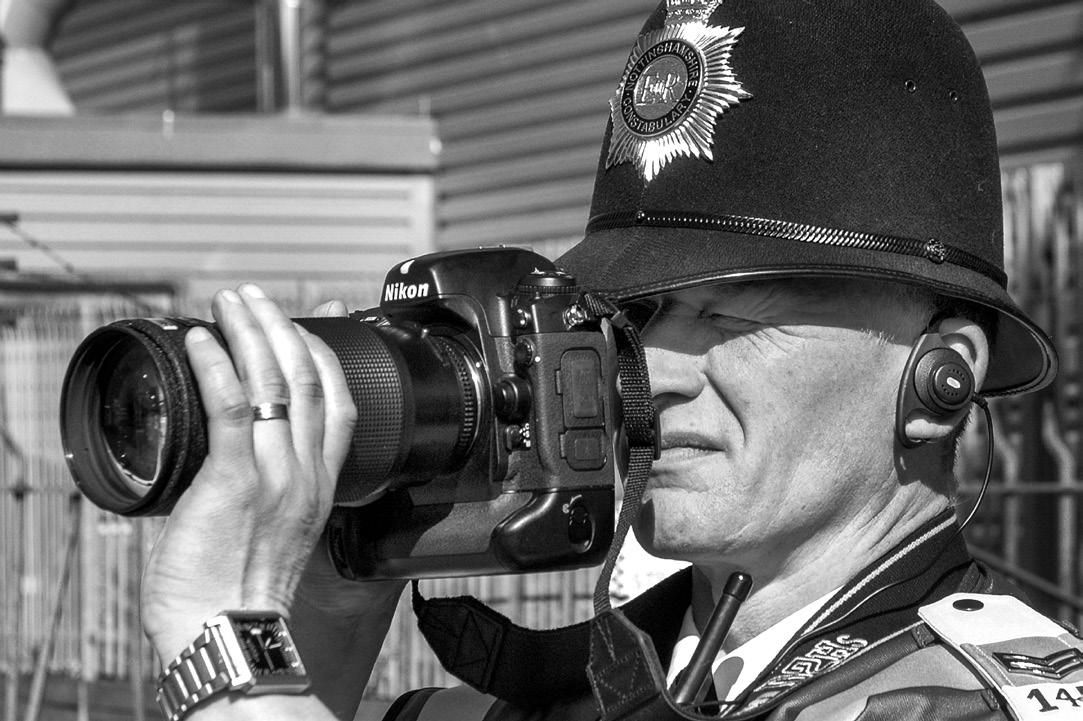
3 minute read
Some of the story so far
with concerns, it doesn’t look like that from here. Unrepresentative baddies hanging on to their power. Imagine (an extreme case): a ‘Nazi’ party in some shape or form gets elected!! (Well, it has happened before). It is obvious that these enhanced databases and surveillance techniques on the population would enable such a state, instant repression and targeting of the troublemakers. Not just notes on past criminal conviction, but also intelligence on associates, beliefs, political activity, spending habits, library records, what TV you watch, internet sites visited. These are obviously very powerful technologies, which like nuclear power, genetic engineering etc. I’m not sure we are grown up enough yet to operate. The prime motive appears to be in trying to keeping the population ‘in line’, rather than operating in their service and the maintenance of their security from crime.
Some of the story so far ...
Advertisement
To be able to be of independent thought. To publish. To congregate with others to draw attention to an issue of concern were believed by most to be the obvious manifestation of a free society. Personally, it’s never seemed like this to me. Free? My life experience, (since I was first hit round the head by a police truncheon at the festival in Windsor Great Park in 1974) is that they are always there, on my case! Especially when I gather together with friends.
Not for my criminal activities you understand! But because I am interested in getting together with others of a similar cast of mind. Then to run experiments in events, lifestyles alternatives and entertainment, that could well contribute to the saving of the planet. To try and make a difference!
Naturally, the ‘vested interests’ both inside and outside of government are perpetually lobbying to move the law about to their best, frequently, commercial advantage. To squash deviance and dissent as it arises, by redefining what a crime is this week.
The use of police in para-military fashion was first tested on a national scale during the miners’ strike (aside from the Second World War!). The police were somewhat overwhelmed by the unrest in the inner cities during the early 1980’s. However, within a couple of years, the sciences of ‘field manoeuvres’ and surveillance techniques were learned. These were then applied to a wide variety of groups with equal vigour.

Tony Benn drew attention to the existence of the “Public Order Tactical Operations Manual”. 5

Benn said: “The manual provides for the training of the police in paramilitary operations, including instruction in methods of incapacitating demonstrators by the infliction of actual bodily harm or the use of police horses to canter into crowds and the tactical use of noise to instil fear, all of which are in clear breach of the law.
“The document was apparently drawn up by the Association of Chief Police Officers ACPO [not an authorised or official body] after the disturbances that occurred in Brixton, Bristol and Toxteth in 1981 and the pages which were released during a recent trial made it clear that officers had been given instructions which laid them open to charges of assault. It is clear from the details that the manoeuvres, with short shields, long shields, horses and truncheons, that it recommends should be deployed are in clear contravention of the rules that have hitherto governed the actions of police forces”.3
ACPO had produced this paper during this period when British officers had been seconded to the Royal Hong Kong Police and the South Korean Police. To see how they dealt with disturbance in the street. This was a severe departure from the way Britain was policed up to then.

With the experience of the miners’ strike and the attack on travellers on the way to Stonehenge for the annual festival, the 1986 Public Order Act was passed. It is from this time that the state sought to gather information on ever larger numbers of individuals and their activities, thus creating huge databases. The collation of information had been much improved. Taken with advances in








